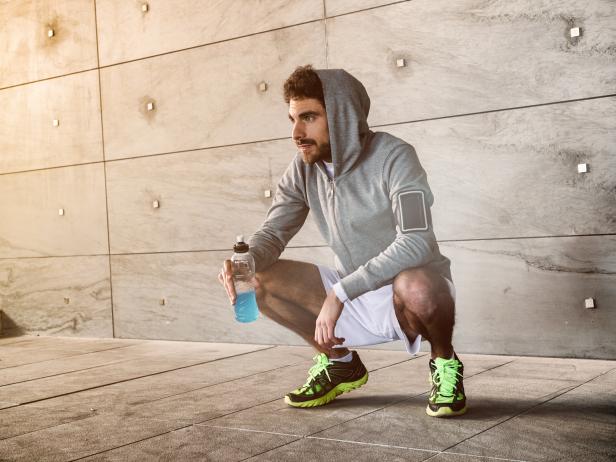[ad_1]

It might sound crazy, but for many athletes, choosing the best sports drink is a lot more confusing that just grabbing a Gatorade. With confusing ingredient lists, conflicting recommendations and so many products on the market, it can be nearly impossible to figure out which to choose. Here’s a breakdown of these beverages and how to choose the right sport drink for your fitness needs.
Sports drinks are most often used for (wait for it), sports. They are designed to help replenish what’s lost during physical activity, which is most often fluid, electrolytes and calories. The most common electrolytes found in sports drinks include sodium, chloride and potassium (the most common electrolytes lost in sweat). The body also loses magnesium, calcium and even iron, but in smaller amounts.
Sports drinks are designed for active individuals and those that have the need to replace sweat losses. This is most often folks who exercise, but can also be for those working in hot and humid environmental conditions.
The first commercial sports drink, Gatorade, was created in the 1960s to help hydrate the Florida Gators football team. Since this invention there has been an endless parade of bottles and powders all claiming to be the optimal hydration beverage for exercise. Most sports drinks do provide some combination of fluid and electrolytes, and some add calories from sugar, but they are not one size fits all. Let’s break down these sports drink ingredients and explain which are most important.
Sugar: Sugar is easily digestible fuel. Sports drinks like Gatorade and Powerade contain sugar for an important reason: to provide energy needed to sustain performance during long duration activity. Therefore, reach for calorie-containing sports drinks before and during activity.
If you are eating a meal or snack that provides carbs and calories from other sources than you can consider opting for calorie-free sports drinks that only provide fluid and electrolytes. These types of “zero” and “diet” sports drinks use artificial sweeteners for flavor and some can cause stomach upset, so be mindful and switch to another product if needed.
Salt: Some sweaters lose more sodium in their sweat than others, and it’s not always the person with the highest sweat rate that loses the most. If you are experiencing fatigue during workouts even when you have eaten and/or prone to cramping, consider a sports drink with extra sodium such as Pediatyle Sport or Gatorlyte Rapid Hydration.
Potassium: The second most plentiful electrolyte lost in sweat is potassium and often, if you can rule out water and sodium as the culprit to hydration issues, potassium should be your focus. Since many sports drinks don’t offer a plentiful amount of potassium, look for those made with coconut water as base as it is an excellent source of potassium like Body Armor.
The body needs daily intake of water for a variety of physical processes including digestion, temperature regulation, pH balance, immune function, muscle health and circulation. The kidneys and other organs help regulate body water that comes in and out. When additional water is lost from sweat, there is an increased demand to replace it. Without accounting for exercise, to help maintain health and hydration, the body needs on average nine cups per day for women and 13 cups per day for men — additional fluid comes in from the foods we eat, including high water content foods like fruits and vegetables.
Some tout chocolate milk as an optimal “sports drinks” but the truth is, it’s different. Chocolate milk and sports drinks share similarities such as provision of fluid, carbs and electrolytes, but the protein content positions it better for after exercise. Not surprisingly, a study published in 2019 determined that chocolate milk had an increased benefit on strength training in high school athletes. For post exercise recovery, chocolate milk can be a one-stop option for the much-needed protein component, but is not an interchangeable option for a sports drink.
Bottom Line: Sports drinks vary.
Finding the right one for you may take some experimentation. Check labels on all products to evaluate the carbohydrate, sodium and potassium content and choose the best fit for your training and fueling.
*This article was written and/or reviewed by an independent registered dietitian nutritionist.
Source link

